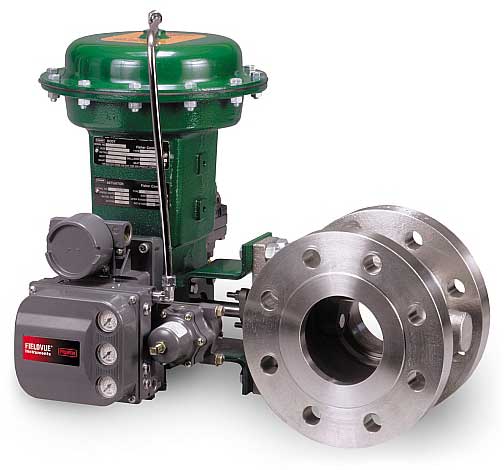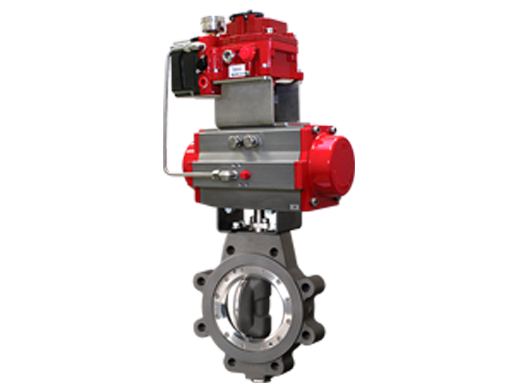Recognizing the Significance of Control Valves in Process Automation
Wiki Article

Maximize Power Savings and Comfort With Advanced Building Automation Controls
In the world of contemporary design and center management, the integration of advanced structure automation regulates stands as a crucial improvement. By utilizing the power of automation, buildings can adjust, react, and progress in ways that were once unimaginable.Power Efficiency Perks
Power performance benefits can significantly lower energy consumption and operational prices in buildings. By applying energy-efficient techniques and technologies, building owners and operators can attain significant financial savings while additionally contributing to environmental sustainability. One of the main advantages of boosting power performance in structures is the reduction of utility bills. Energy-efficient systems, such as sophisticated building automation controls, can enhance the usage of sources like air conditioning, heating, and lights, resulting in reduced power expenses over time.In addition, enhanced power performance can extend the lifespan of building devices and systems. By operating extra efficiently, HVAC systems, lighting components, and various other structure components experience much less wear and tear, resulting in minimized upkeep and substitute prices. Furthermore, energy-efficient buildings often regulate greater home worths and rental rates, giving long-term economic benefits to owners.
Furthermore, power efficiency can boost resident convenience and performance. Appropriately controlled indoor settings with optimum lights and thermal problems produce an even more pleasant and conducive work area, bring about boosted employee satisfaction and efficiency. Generally, the energy performance benefits connected with advanced structure automation controls are diverse, encompassing price savings, environmental stewardship, and occupant wellness.
Improved Comfort Control
Enhancing convenience control in structure environments needs an innovative combination of sophisticated automation systems for optimum resident health. By making use of sophisticated building automation controls, centers can customize the interior environment to fulfill the details needs and choices of residents. These systems allow specific regulation of temperature, lighting, and ventilation, producing a effective and comfy environment. Resident fulfillment and productivity are very closely linked to thermal convenience, making it vital to have systems in position that can adjust to transforming conditions in real-time.By integrating these innovative controls, structures can not only improve convenience yet additionally improve energy effectiveness by optimizing system operations based on real occupancy and use patterns. Ultimately, prioritizing passenger convenience via advanced automation systems leads to a much more delightful and healthier indoor atmosphere.
Operational Effectiveness Improvements

Additionally, the application of real-time surveillance and analytics devices enables structure operators to YOURURL.com determine energy ineffectiveness and functional abnormalities without delay. By continually keeping an eye on power usage patterns and system efficiency metrics, modifications can be made in real-time to enhance power usage and ensure peak functional efficiency. control valves. In addition, integrating demand feedback methods into structure automation controls can even more enhance functional effectiveness by dynamically changing energy use based on grid conditions and pricing signals
Indoor Environment Optimization
Efficient interior environment optimization is an essential facet of building automation controls, making certain occupants' convenience and well-being while optimizing energy financial savings. By utilizing innovative sensors and controls, building automation systems can continuously change and keep an eye on temperature level, moisture levels, air quality, and air flow to create an optimum interior atmosphere. Maintaining regular and comfy conditions not just improves occupant fulfillment yet also increases productivity and overall health.Indoor environment optimization likewise plays an important duty in power performance. By fine-tuning home heating, air conditioning, and air flow systems based upon real-time information and occupancy patterns, building automation controls can substantially minimize energy intake - control valves. Applying approaches such as demand-controlled air flow and thermal zoning can assist minimize power waste while guaranteeing that each location of the structure gets the necessary conditioning.

Sustainable Setting Development
Structure automation regulates not just optimize indoor environment conditions for power efficiency and owner convenience but also lay the structure for developing a sustainable setting through critical administration of systems and resources. By incorporating advanced structure automation her explanation innovations, such as sensors, actuators, and smart software, centers can adjust and check energy use in real-time to minimize waste and lower their carbon footprint. These systems make it possible for predictive upkeep, determining potential concerns before they escalate and maximizing equipment performance to enhance long life and performance.In addition, lasting setting creation extends beyond power monitoring to encompass water conservation, waste reduction, and indoor air high quality renovation. Structure automation controls can regulate water usage, detect leaks, and ensure proper waste disposal methods, adding to overall sustainability efforts. Additionally, by controlling and keeping track of air flow and filtering systems, these technologies improve passenger wellness and performance while decreasing energy intake connected with cooling and heating operations.
Conclusion
To conclude, advanced structure automation regulates deal substantial advantages in terms of energy savings, comfort control, operational efficiency, indoor climate optimization, and creating a sustainable setting. By executing these controls, buildings can achieve optimal performance while minimizing power usage and enhancing passenger convenience. It appears that the use of sophisticated automation innovation is crucial in enhancing building performance and producing an extra lasting future.Energy performance advantages can substantially reduce power consumption and functional costs in structures. Generally, the energy effectiveness benefits connected with sophisticated building automation controls are diverse, encompassing expense savings, ecological stewardship, and occupant health.
Furthermore, including need response techniques into structure automation controls can additionally boost functional efficiency by dynamically adjusting energy usage based on grid conditions and prices signals.
Structure automation controls not only enhance indoor climate problems for energy efficiency and passenger comfort yet likewise lay the foundation for creating a lasting environment via calculated administration of sources and systems.In final thought, advanced building automation controls deal substantial advantages in terms of power financial savings, convenience control, operational efficiency, indoor climate optimization, and creating a lasting setting.
Report this wiki page